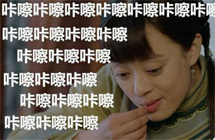为什么中国年轻人对表情包情有独钟?
|
It is probably no exaggeration to say that, these days, anyone who uses the internet on their phone understands the formidable power of a deftly deployed cat GIF, a knowingly dropped “crying with laughter” smiley, or a casually placed icon of a minuscule rose, watermelon, or cup of coffee. Today's world is one in which the emoji reigns supreme. “Emoji” is a Japanese word meaning “pictograph,” composed of the Japanese characters e, meaning “picture,” and moji, meaning “written character.” In Japan, it originally referred to the ideograms and smileys used on mobile phones in the late 1990s. Since Apple added emojis to an iPhone update in 2011, they have taken the world by storm. One could say that, in the internet age, emojis are the world's most widely understood language.
However, on Chinese social media, just understanding how to use emojis is not enough. Recently, young Chinese have become infatuated with an even more complex form of emoji called biaoqingbao, or sticker sets. Much like emojis, sticker sets are groups of graphics used to express emotions. However, emojis tend to come in uniform sets distributed by phone manufacturers as part of their products' operating systems, making them centralized, standardized, and limited in quantity. In contrast, the power to create and distribute sticker sets doesn't lie in the hands of corporations — anyone can create them. Sticker sets are therefore decentralized: They generally comprise images or animated GIFs of popular celebrities, viral quotes, anime scenes, or TV and film stills, frequently paired with a line of text. In essence, sticker sets are considerably more diverse and individualized than emojis. Sticker sets have come to dominate the social networks of young Chinese people, especially those born in the 1990s. For some of them, verbal and text-based conversations have given way to a barrage of stickers, furiously posted in a kind of competition to see who has the most or the funniest. During a recent conversation with an acquaintance of mine — a '90s kid — over messaging app WeChat, I wrote that I disagreed with something he had said. In response, he shot back a rapid volley of stickers. The first was a screenshot taken from the hit Chinese political drama “In the Name of the People,” in which an actor, Xu Yajun, purses his lips in a look of suspicion. Next came a popular internet meme of a floppy-limbed girl pulling a face of exaggerated exasperation, followed quickly by an image of a ginger cat whose comically drawn-on frown was supplemented by a single character meaning “Hmmph!” Last but not least, my phone lit up with the pouting baby face of Huang Zitao, a Chinese singer and actor best known for his involvement in popular boy band EXO. None of these stickers expressed genuine anger, despite their obvious petulance. Instead, they were meant as a rather coy way of saying: “Why don't you agree with me?” Chinese people born in the '90s grew up in a fundamentally different environment from their elders. Today, connected to a veritable ocean of online information and surrounded by the clamor of differing opinions, new youth subcultures have emerged, challenging the previously hegemonic power of central ideology and opening up space for greater individualism and creativity. Young people have used this technology to construct their own system of expression and communication, complete with unique aesthetic and value systems. The internet has, in many ways, given them a means of constructing new cultural identities. It is precisely for this reason that sticker sets have won their affection. Socializing in China traditionally places a great emphasis on established etiquette that governs everything from what you wear, to how you sit, to how you treat your elders. Unsurprisingly, young people tend to dislike such over-elaborate formalities. Online messaging frequently lacks the context clues and mood indicators that we take for granted in real life, such as facial expressions, tone of voice, and pauses in speech. In China, the solution is to employ cheerful, entertaining, and tongue-in-cheek sticker sets. A skillfully used sticker is capable of accurately expressing the speaker's state of mind without risking the tension or awkwardness that comes with social misunderstanding. They serve the same purposes as mood indicators. To give another example, this sticker serves to put an end to the conversation when its user is ready to go to bed. Between close friends or in the context of a romantic relationship, merely saying “Goodnight” might seem perfunctory. Instead, the image shows a man in bed, his face flushed, accompanied by deliberate sexual innuendo: “I'm off to bed — I'll leave the door open though.” Not only is this sticker able to effectively terminate the conversation, but it also reaffirms a degree of intimacy between speakers. It lets the recipient know that, in the other person's eyes, they are more than just a random acquaintance. Sticker sets are the new language of China's youth. Some of the country's scholars are concerned that young people's literacy skills will decline as stickers continue to dominate social media. While these concerns are not completely unfounded, they are somewhat excessive. What China's youths need now is more channels of self-expression. We must allow them to speak more freely and independently, so that their unique subcultures may challenge mainstream culture and make mainstream values more relaxed, diverse, and tolerant. For the moment, at least, sticker sets are playing this critical role. |









